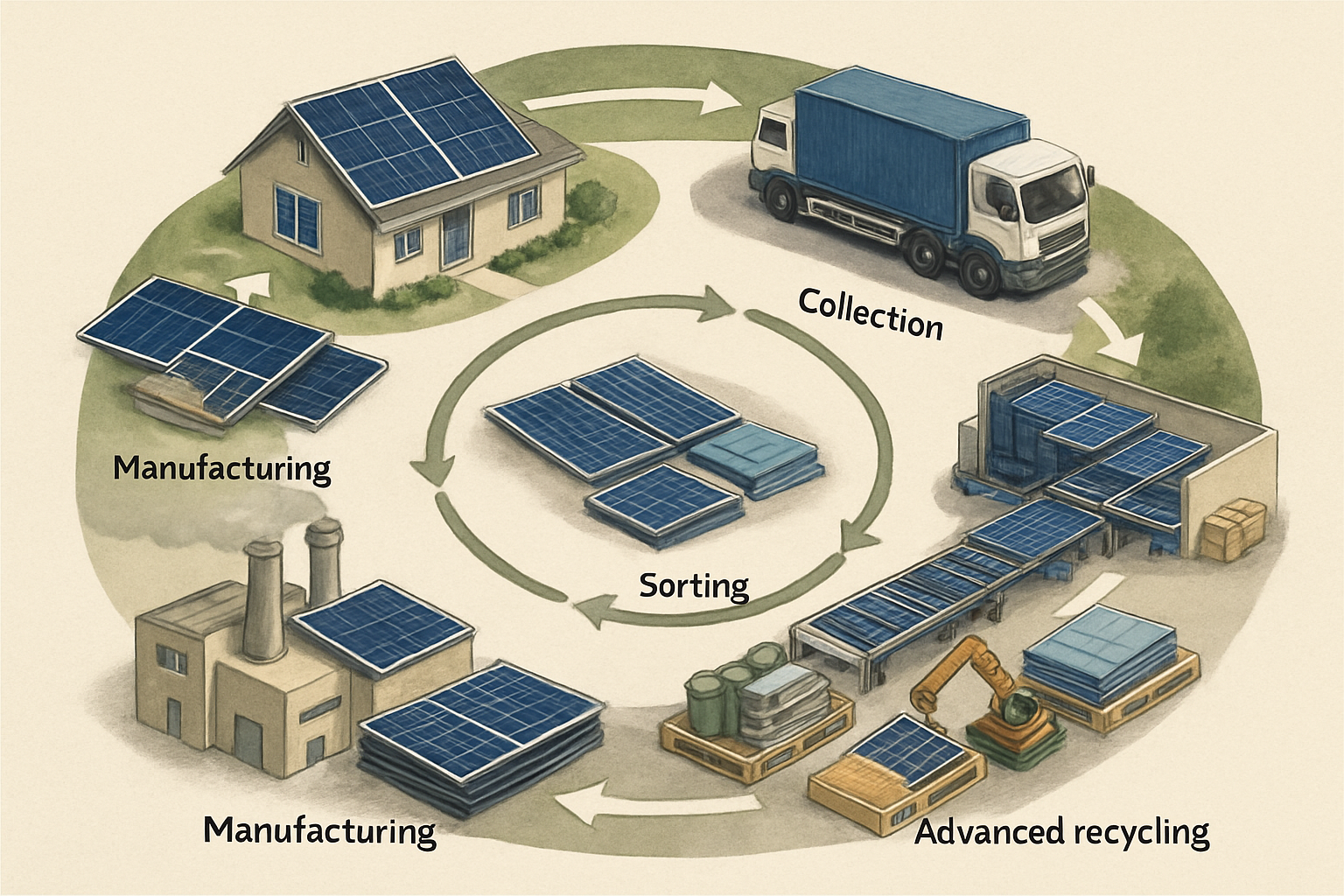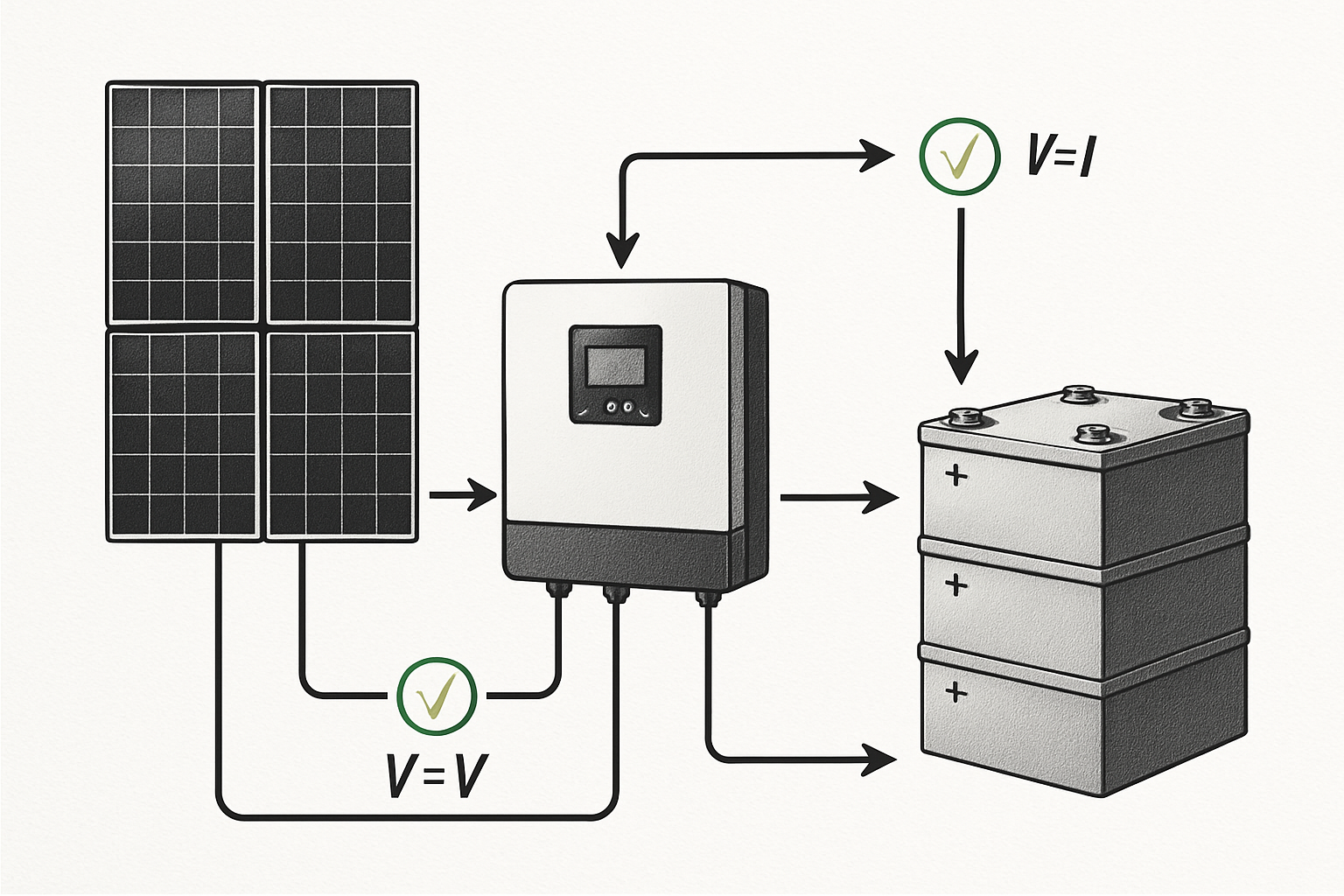Your solar energy system represents a significant investment in energy independence. To truly maximize its value, you need clear insights into its performance. Monitoring apps provide this crucial visibility, helping you keep track of your inverter and solar panel health. These tools ensure your system operates at its peak efficiency, protecting your investment and securing your energy future.

The Core of Your Solar System: Inverters and Panels
Understanding how your solar panels and inverters function is the first step toward effective monitoring. These two components work together to convert sunlight into usable electricity for your home or business.
Inverters: The Brain of Your PV System
Solar panels generate direct current (DC) electricity. However, most household appliances and the electrical grid operate on alternating current (AC). This is where your solar inverter steps in. It transforms the DC electricity from your panels into AC electricity. According to the IEA's "Solar Energy Perspectives" report, photovoltaic (PV) systems directly convert light into electricity, and usually require an inverter to transform the DC of PV modules into AC, as most usages run on AC.
Inverters are critical for system performance. A malfunctioning inverter can severely impact your energy production. Modern inverters also often serve as the central communication hub for your solar system, collecting data from panels and sending it to monitoring platforms.
Solar Panels: Your Energy Harvesters
Solar panels capture sunlight using photovoltaic cells. These cells create an electric current when exposed to light, a phenomenon known as the photovoltaic effect. The efficiency of your panels directly affects how much electricity your system generates. Factors like shading, dirt, and physical damage can reduce their output.
The lifespan of solar panels is impressive. Many manufacturers offer warranties for 25 years. A 2025 IRENA publication on enhancing healthcare delivery with renewables suggests benchmarking solar panels for a lifespan of 25 years, aligning with typical manufacturer warranties.
Why Monitor Your Solar System?
Active monitoring of your solar system offers several compelling benefits. It moves you beyond simply hoping your system works to proactively ensuring its optimal performance and longevity.
Maximizing Energy Production
Your goal is to generate as much clean electricity as possible. Monitoring apps provide real-time data on your system's output. You can see how much energy your panels are producing at any given moment. This allows you to identify periods of low production and investigate potential causes, like unexpected shading or a dirty panel. Optimizing production means more energy independence for you.
Tracking systems can significantly boost energy yield. The IEA's "Next Generation Wind and Solar Power" report highlights that single-axis trackers can increase electricity generation by 12-25% annually in high insolation areas, with dual-axis tracking adding another 10-15% to the yield.
Early Problem Detection
Small issues can quickly escalate into costly repairs if left unaddressed. Monitoring apps act as an early warning system. They can alert you to anomalies, such as a sudden drop in a single panel's output or an inverter fault. Catching these problems early often means simpler, less expensive fixes. This proactive approach safeguards your investment.
Financial Benefits and ROI
A well-maintained and efficiently operating solar system translates directly into financial savings. By maximizing energy production, you reduce your reliance on grid electricity and potentially earn credits through net metering. Monitoring helps you ensure your system is always delivering its promised return on investment. You can track your savings over time and confirm your path to energy independence.
Key Features of Effective Monitoring Apps
Not all monitoring apps are created equal. When evaluating options, consider features that offer comprehensive insights and ease of use.
Real-time Data and Historical Trends
The best apps provide immediate access to your system's current performance. You should see how much electricity your panels are generating right now, how much power your home is consuming, and the net energy flow. Equally important is the ability to view historical data. This lets you analyze daily, weekly, monthly, and yearly trends. You can compare performance over different seasons or identify long-term degradation.
A typical monitoring dashboard might display:
- Current power output (kW)
- Daily energy production (kWh)
- Total energy produced (kWh)
- Energy consumed by household (kWh)
- Grid interaction (import/export kWh)
Alert Systems and Diagnostics
An effective monitoring app will notify you when something is wrong. Look for customizable alerts that can be sent via email or push notification for issues like:
- Inverter faults
- Panel string underperformance
- Grid connection problems
- Communication errors
Some advanced apps offer diagnostic tools, providing more detail about the nature of a problem, helping you or your installer troubleshoot more efficiently.
User Interface and Accessibility
A powerful app is only useful if you can easily navigate it. A clean, intuitive user interface is paramount. Data should be presented clearly, often with visual graphs and charts. The app should be accessible across various devices, including smartphones, tablets, and web browsers, allowing you to check your system's status from anywhere.
Choosing the Right Monitoring Solution
Selecting the ideal monitoring app involves considering your specific system and needs. Here are some factors to guide your choice:
Compatibility with Your System
Most monitoring apps are tied to specific inverter brands or system manufacturers. Ensure the app you choose is fully compatible with your existing solar inverter and any other components, such as a home energy storage system. Our company, with its focus on integrated ESS development, ensures seamless compatibility between our LiFePO4 batteries, hybrid inverters, and solar panels, often including robust monitoring capabilities.
Data Security and Privacy
Your energy consumption data is sensitive. Verify that the monitoring provider employs strong data encryption and privacy protocols. Understand how your data is collected, stored, and used. Prioritizing a provider with a strong commitment to data security protects your personal information.
Support and Updates
Technology evolves, and so do solar systems. Choose a monitoring solution from a reputable company that offers reliable customer support and regular software updates. This ensures your app remains functional, secure, and compatible with future system enhancements.
Empowering Your Solar Investment
Monitoring apps are more than just gadgets; they are powerful tools that empower you to take control of your solar energy system. By providing clear insights into performance, enabling early problem detection, and helping you maximize your financial returns, these apps ensure your journey to energy independence is smooth and efficient. Embrace smart monitoring to keep your solar system running optimally for years to come.
Frequently Asked Questions
What kind of data can I see in a solar monitoring app?
You can typically view real-time power output, daily and total energy production, household energy consumption, and how much electricity you are importing from or exporting to the grid. Many apps also show historical performance data and environmental benefits, such as carbon emissions avoided.
How do solar monitoring apps detect problems?
Monitoring apps constantly collect data from your inverter and sometimes from individual panel optimizers. They use algorithms to identify deviations from expected performance. For example, if a specific panel or string consistently produces less power than others under similar conditions, the app can flag this as a potential issue and send an alert.
Are solar monitoring apps free?
Many solar system manufacturers include a basic monitoring app or web portal as part of the system purchase. Some advanced features or third-party monitoring services might require a subscription. Always check with your solar installer or system provider for details on what is included with your specific setup.
Can monitoring apps help me reduce my electricity bill?
Yes, indirectly. By allowing you to track your system's performance, identify inefficiencies, and understand your energy consumption patterns, monitoring apps help you ensure your solar system is generating as much power as possible. This maximizes your self-consumption of solar energy and reduces your reliance on grid electricity, leading to lower bills.
References
- IEA. (2011). Solar Energy Perspectives.
- IEA. (2016). Next Generation Wind and Solar Power (Full Report).
- IRENA. (2025). Electrification with renewables: Enhancing healthcare delivery in Mozambique.





Leave a comment
All comments are moderated before being published.
This site is protected by hCaptcha and the hCaptcha Privacy Policy and Terms of Service apply.